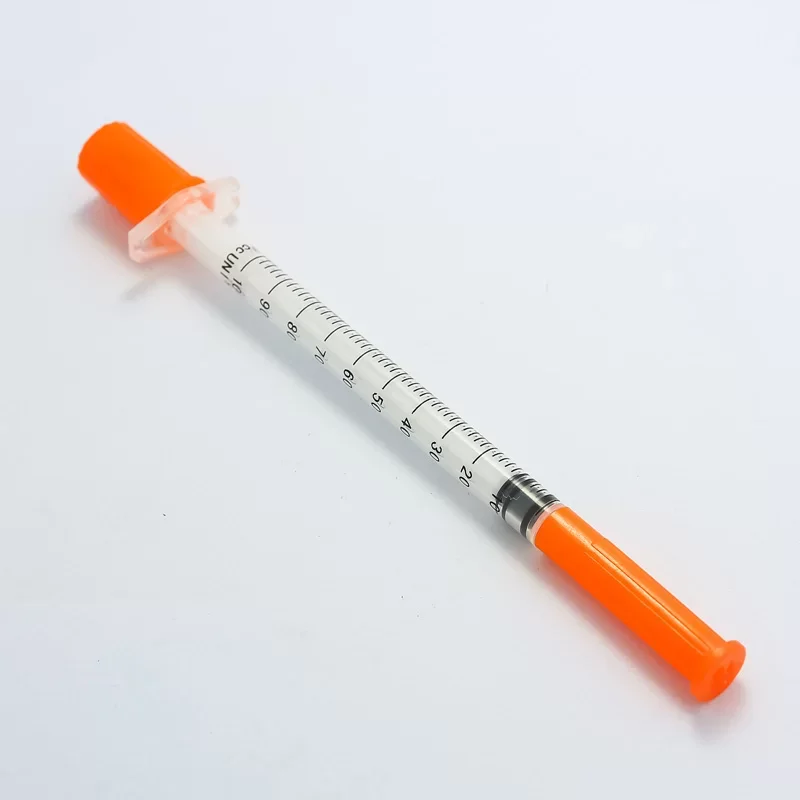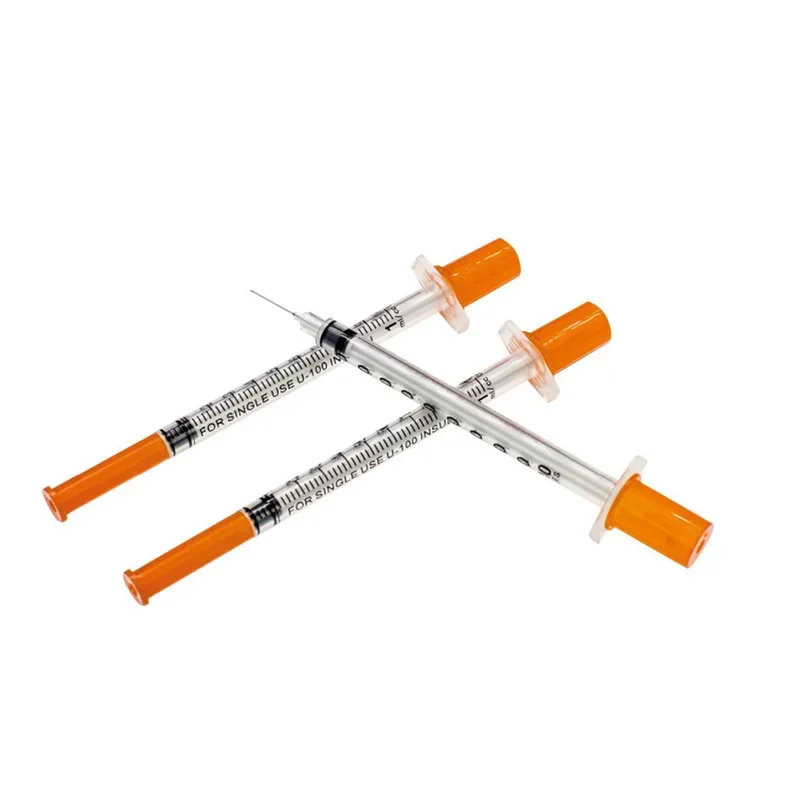Insulin syringes, as the name suggests, are syringes specially designed to inject insulin. Usually consists of four parts, namely needle cap, injection needle, syringe, and pusher.
Classification of insulin syringes
Insulin syringes on the market mainly include ordinary insulin syringes, insulin injection pens and needle-free insulin syringes. Ordinary insulin syringes are designed and manufactured in accordance with the standard of single use. They are plastic products with exquisite workmanship, sharp needles and clear scales. Insulin injection therapy, should try to ensure that one change at a time. Insulin syringes should not be used indiscriminately and must be used with matching insulin, otherwise it will easily lead to inaccurate insulin dosage and unstable blood sugar. At the same time, insulin syringes from different manufacturers cannot be used universally.

Special syringe for injecting insulin
The reason why you need to use a special syringe to inject insulin can not be replaced by a common syringe, because the scale units marked on the two are different. The scale marked on the special insulin syringe is the insulin unit, while the scale on the ordinary syringe is the milliliter. The minimum unit of an ordinary syringe is usually 0.1 ml, which is equivalent to 4 units of insulin after conversion, and the insulin dose that most patients need to inject is not an integer multiple of 4. Therefore, if an ordinary syringe is used, the patient not only needs to convert the dose and volume, but also it is difficult to accurately draw the required dose.
Things to consider before injecting insulin
Before injection, patients should wash their hands, check the type of insulin and the injection dose, exhaust the air in the syringe, and choose the parts with more subcutaneous fat, such as both sides of the abdomen, the upper outer part of the thigh, etc., disinfect the skin with alcohol cotton balls, and wait for alcohol. After drying, pinch up the injected skin with your thumb, index finger and middle finger, insert the 4mm needle vertically, inject the 6mm needle at a 45° angle, push the liquid medicine, hold it for a few seconds, slowly pull out the needle, and press with a cotton ball, No need to massage the injection site. It should be noted that when injecting insulin, the injection site must be rotated frequently, and each injection point should be separated by more than 1 cm to avoid repeated injections at the same site, otherwise it will easily lead to local subcutaneous fat atrophy or hyperplasia, which will affect the absorption of insulin. In addition, avoid wiping the needle tip with alcohol-based reagents. Alcohol will strip the coating of the needle tip, make the needle core rough, and increase the pain during injection.

Syringes need to be stored properly
Insulin should be stored properly and should avoid extreme high and low temperatures or violent shocks. All unopened insulin should be refrigerated at 2-8 degrees Celsius and can be stored until the expiry date indicated on the package. In-use vials of insulin can be stored at room temperature (below 25 degrees Celsius). If stored at room temperature for more than a month, the efficacy of the drug may be weakened. The date of opening and use can be marked on the bottle when opening the bottle. If the insulin is stored in the refrigerator, in order to reduce the local irritation at the injection site caused by the injection of cold insulin, it is recommended to place the insulin bottle at room temperature before drawing the insulin, or roll the syringe between the palms of the hand after drawing the medicine to restore the normal temperature. In-use insulin cartridges are placed in a pen-type syringe and can be used for 28 days at room temperature, protected from sunlight. In order to avoid the influence of temperature when traveling, insulin should not be placed in a high-temperature car or in the carry-on luggage of an airplane. If the place to go out is a high-temperature outdoor, you can use an insulin cooler bag. Because different pharmaceutical companies have different storage conditions for insulin,
Insulin Syringe Disposal
The used needles should be kept out of the reach of children, and can be disposed of in a sealed needle collection bin or by using a needle clipper for insulin needles, and disposed of in accordance with local garbage disposal regulations. There are specific needle collection bins for discarded needles in hospitals. Some hospitals are willing to take back these used needles for disposal. You can ask your hospital if this service is available.
CMC Tech CO.,LTD's main business is disposable medical consumables. At present, disposable medical accessories include the following categories: infusion sets, syringes, blood collection tubes and blood collection needles, urine bags, laboratory consumables, medical plastic materials, medical non-woven fabrics, machinery and molds, etc. Complete medical consumables supply system and complete pharmaceutical packaging solutions. If you are willing to buy insulin syringes, please contact CMC Tech CO.,LTD.














Comments (0)